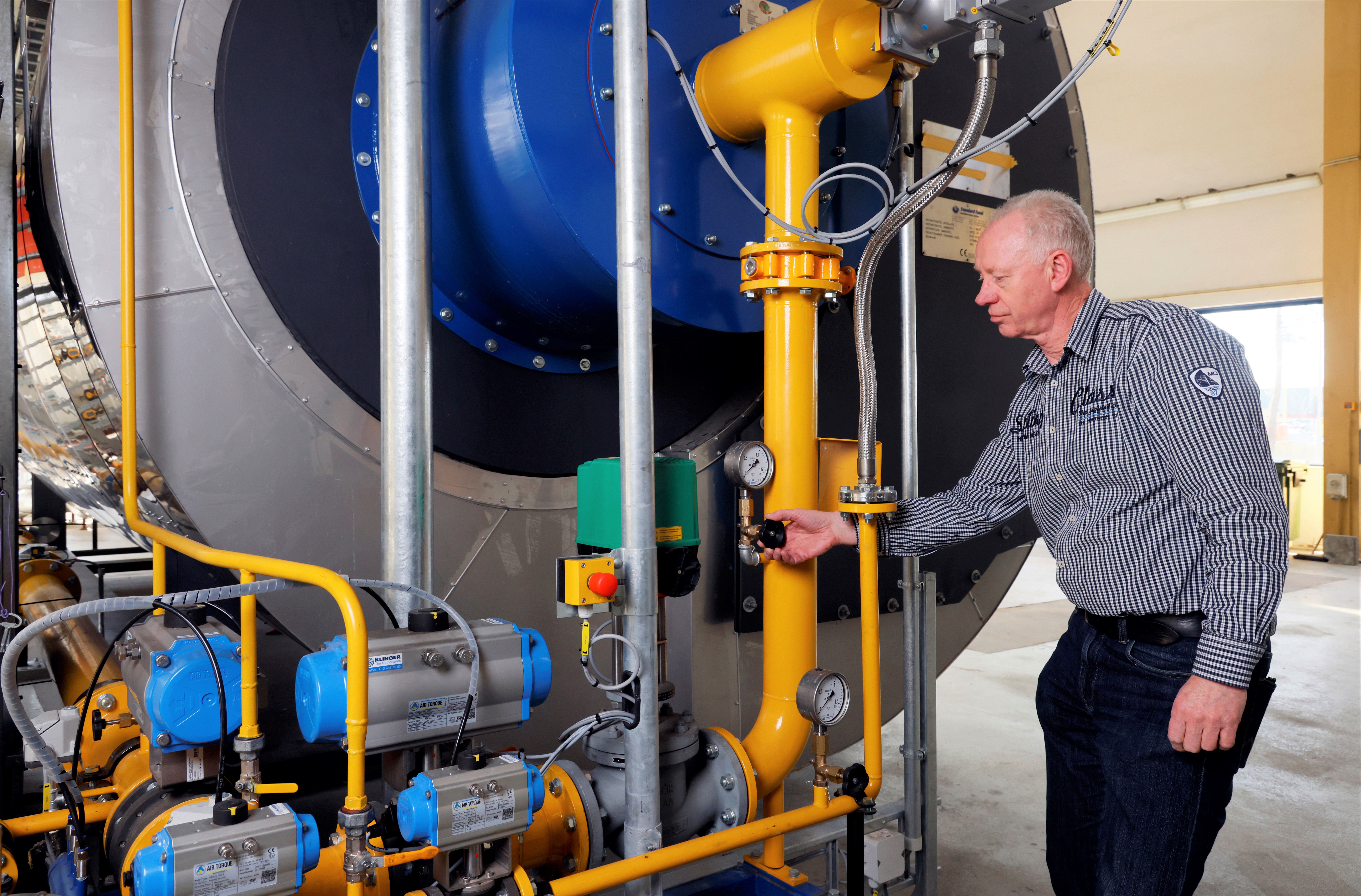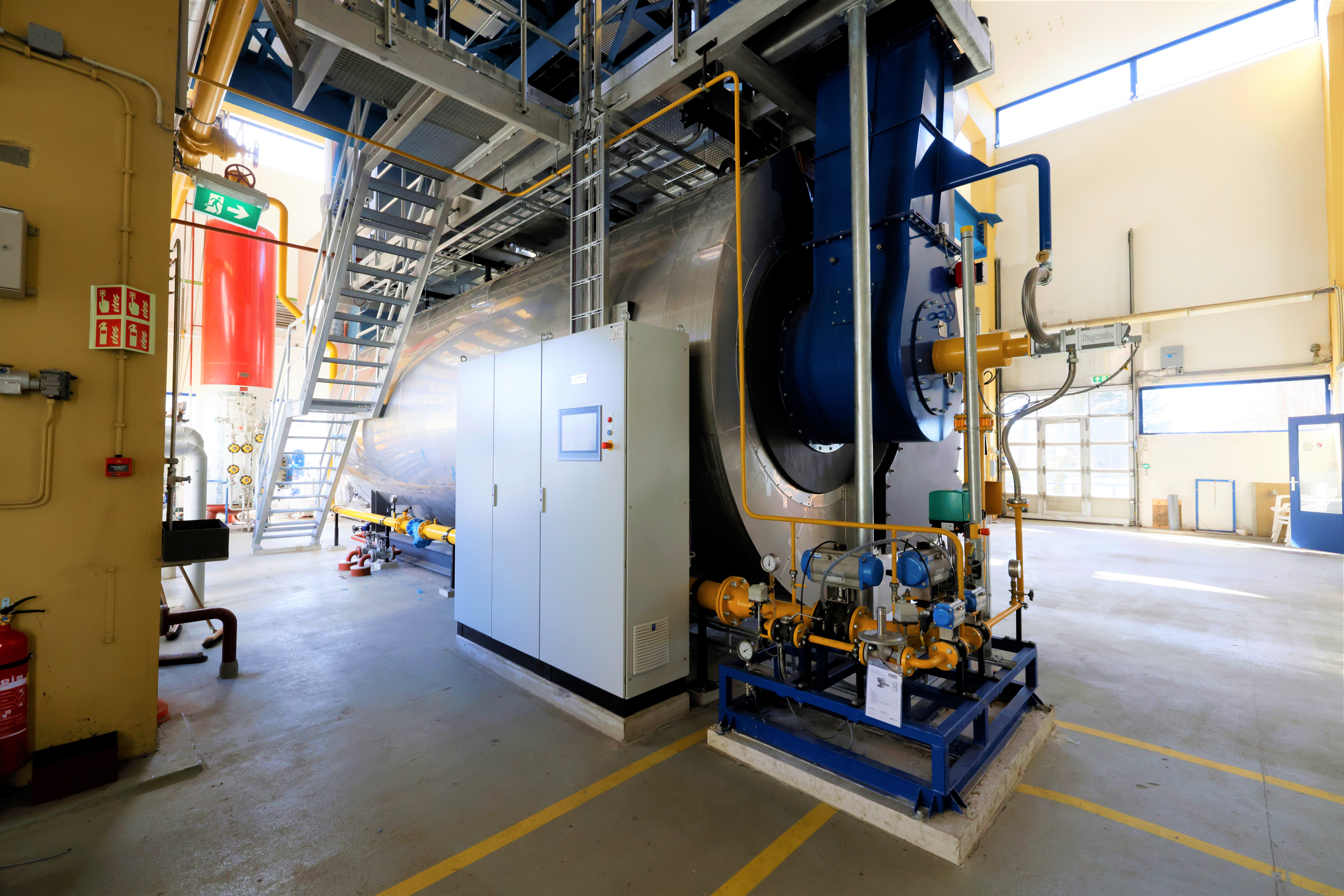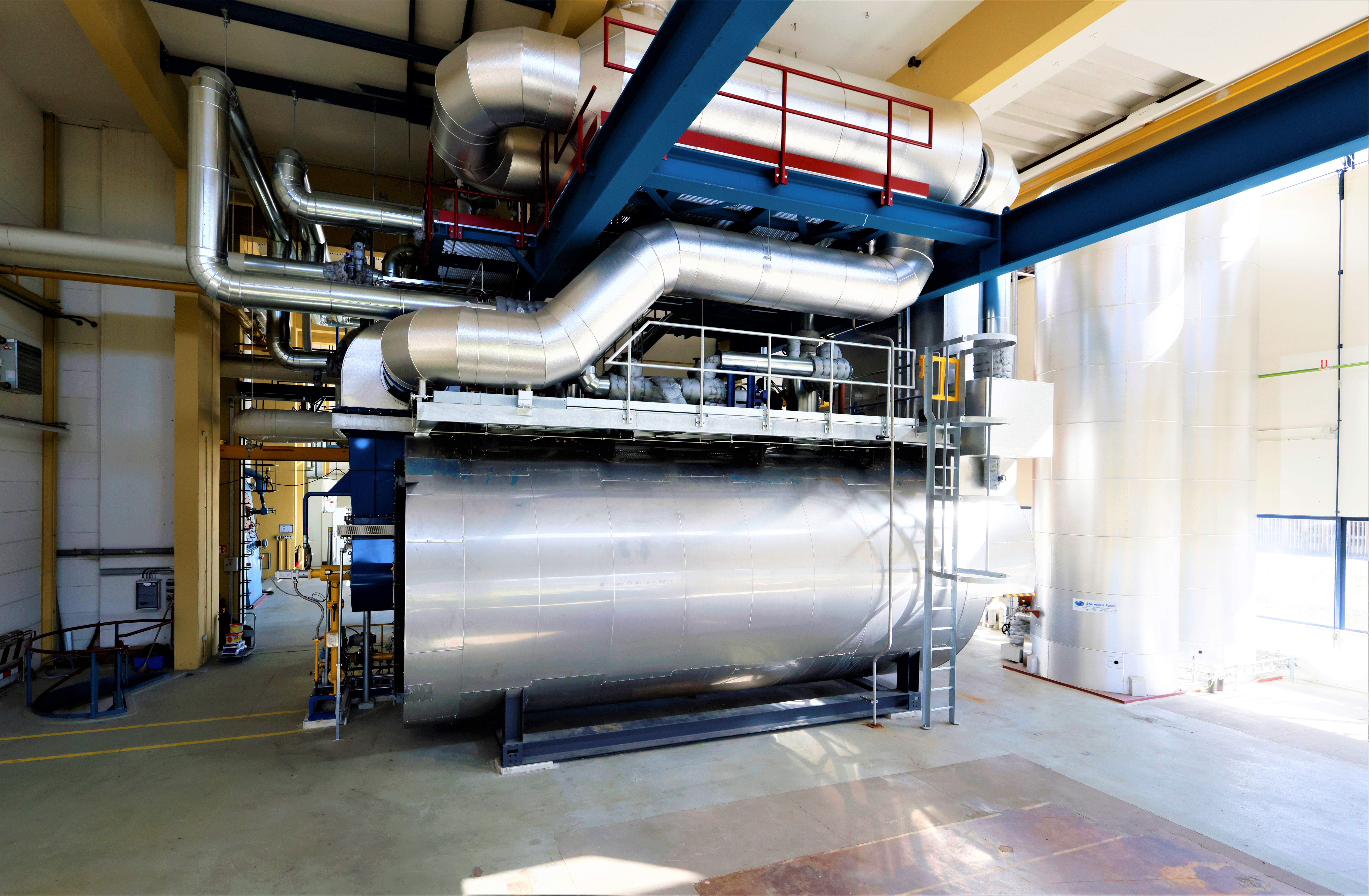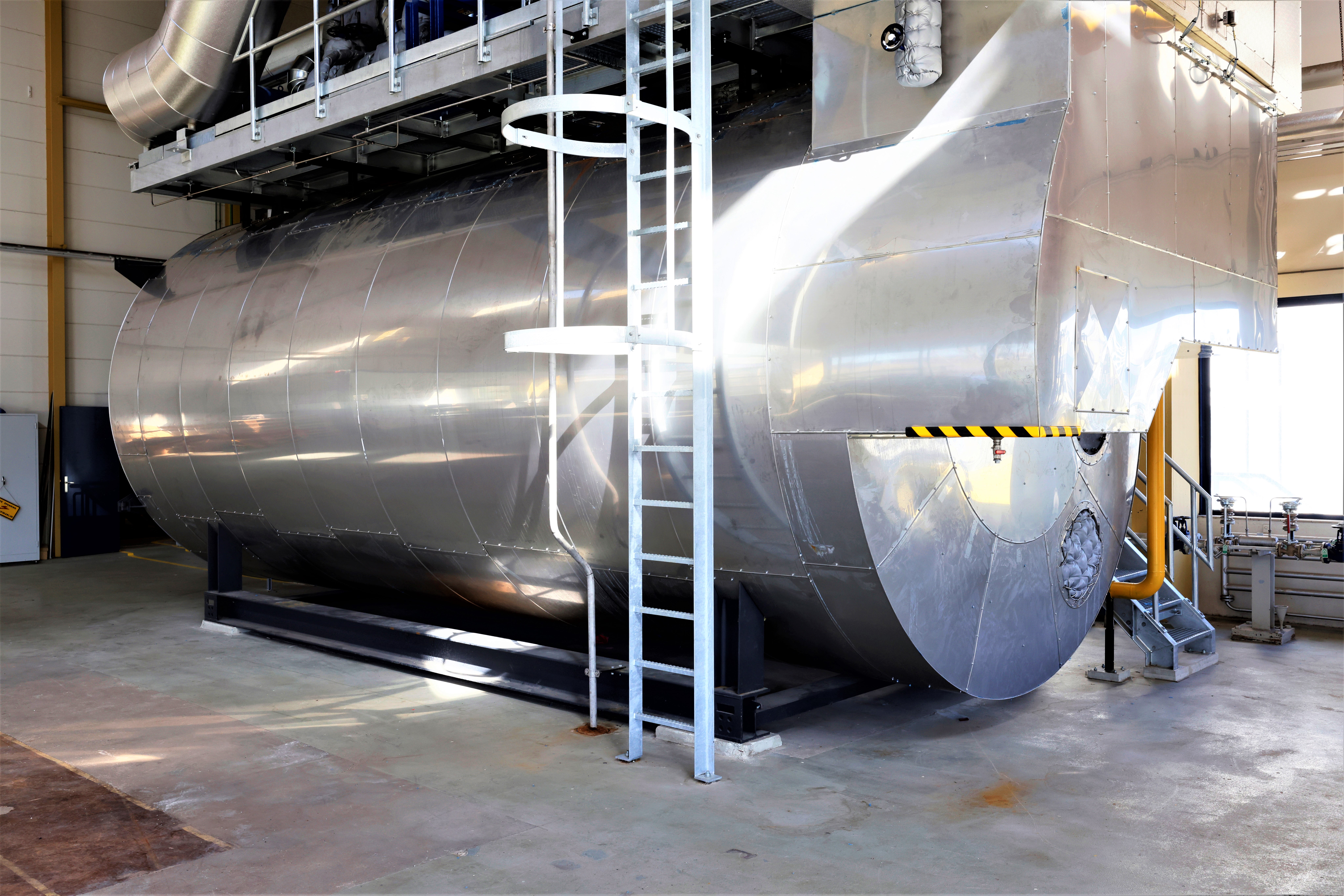New boiler in cogeneration plant brings TU Delft Campus step closer to sustainable heat supply
The TU Delft cogeneration plant is the striking edifice that houses three powerful boilers which heat the entire campus. In the summer of 2021, a new high efficiency boiler weighing 50,000 kilos was installed in the plant. The whole operation went virtually unnoticed. Although having said that, the rare zebra fish in the Applied Physics building may have noticed that something was going on (more about this later). The new boiler brings TU Delft a step closer to a sustainable heat supply.
| The heat supply at TU Delft | ||
| Boiler 8 (1973): | 35MW | |
| Boiler 9 (1993): | 15MW | |
| Cogeneration (2012): | 4MW | |
| Boiler 10 (2021): | 15MW | |
| The new high efficiency boiler | ||
| Weight: | 50,000 kilos (plus 40,000 litres of water) | |
| Supplier: | Standard Fasel, Standardkessel factory | |
| Delivery: | December 2021 | |
| Specifications: | - pilot light setting of 1 MW | |
Unique building
Building 43 on Leeghwaterstraat 36 is a unique, some would say mysterious, building. Everyone who works or studies at TU Delft is familiar with it, but very few have seen it up close. And fewer still have thought about the crucial role that this building plays in supplying the campus with heat. The cogeneration plant dates back to 1957. It initially burned coal to heat the area, which explains the unusual roof construction. There used to be a crane on the roof to lift coal from the ground into the shaft, which is why the roof is V-shaped. It could take some 200 cubic metres of coal.
From coal to gas via oil
Later on, the campus buildings were heated by oil. Later still, gas-powered boilers supplied the heat. Ever since the building was completed, every boiler has been given a number. Old boilers were regularly replaced by more efficient or more powerful models. The most powerful boiler (boiler 8) was installed in 1973 and is right behind the entrance. This boiler has a maximum capacity of 35 Megawatt (MW).
Two cogeneration units are positioned to the right of it. The powerful motors with dynamo provide both electricity and heat: 4MW. Behind that, the heat leaves the power plant through four wide pipes and flows into the campus buildings along 16 kilometres of pipes. The highest water temperature is for the buildings that are oldest in terms of energy efficiency. Lower water temperatures (still around 80 degrees) are enough to heat the better-insulated buildings. Four pipes running side-by-side convey the cool water back to the plant, where it is reheated by the boilers.
Boiler 9, which arrived in 1993, is further along in the building. The capacity of this boiler is 15 MW. The room next to it houses the very latest source of heat for the cogenerator, flashing blue and still only half unwrapped. Installed in 2021, high efficiency boiler number 10 generates 15 MW.
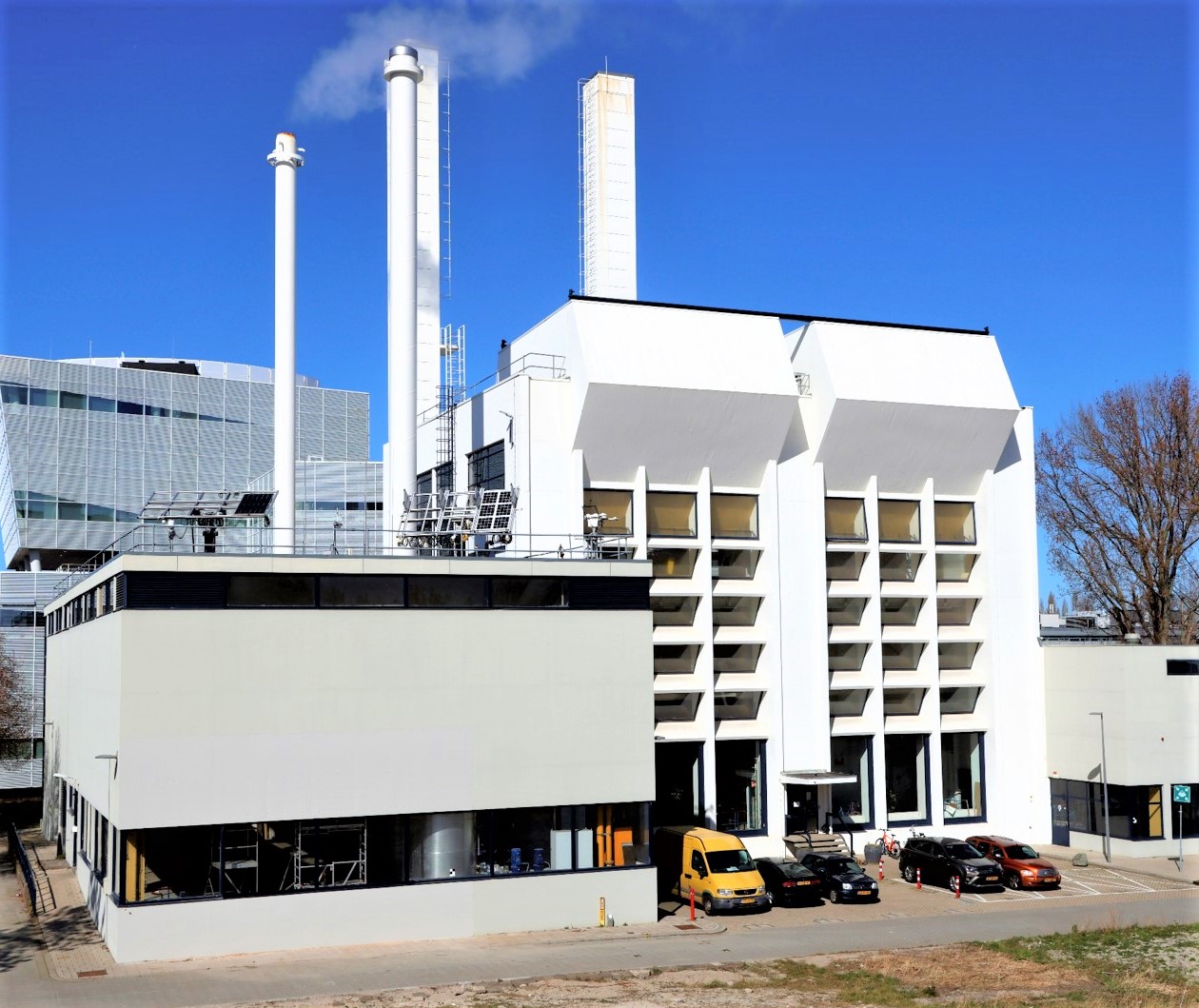
Replacing old boilers
Why did we need this new boiler? There are two important reasons. Firstly, the old boilers were no longer fit for purpose. The new boiler has been installed on the spot where boilers 5 and 6, dating from 1962 and 1963, stood. Boiler 5 was fairly quiet, but kept springing leaks. The manager of the cogeneration plant spent too much time trying to keep it going. Boiler number 6 worked well, but didn’t meet the latest standards for emissions so we couldn’t use it for more than 500 hours per year. It was only used as a back-up option.
Ready for renewable sources of heat
The second reason for this purchase concerns TU Delft’s sustainability goal. TU Delft is working hard to make its campus more sustainable and to minimise its impact on the environment. By 2030, TU Delft wants to be a carbon-neutral, circular campus. This means that in the future, the campus must be heated using renewable sources of heat. Although the new boiler is gas-powered, in the long term it should be compatible with renewable heat sources. Eventually, it will only be used for extra capacity during peak times, i.e. periods when the buildings suddenly need a lot of extra heat.
Geothermal energy is promising
The use of geothermal energy is a promising new development. Not only because a usable source of heat can be found at a depth of over two kilometres under Delft, but also because it gives TU Delft, as a university of technology, a unique showcase on its campus for contributing to developing knowledge on geothermal energy. The source is the subject of a large-scale research programme, which is focusing on safe and responsible options for scaling up the use of geothermal energy as a source of clean energy.
There is a plot of empty land between the sustainable car park that was opened in 2021 and the cogeneration plant. Once the business case has been completed and the collaborative partners have agreed on the strategy, this piece of land could be used to drill for geothermal heat. This is renewable heat. The process involves pumping warm water to the surface, extracting the heat to heat the campus, and returning the cooled water into the ground, where it is reheated in a natural way. A space has been reserved next to the new high efficiency boiler in the cogeneration plant for installations that will be needed for geothermal energy. When the new boiler was connected, future compatibility with geothermal heating technology was also taken into account.
A substantial energy system
Making the heat source more sustainable is only one step towards making the heat supply to the campus greener. The buildings need to be insulated more efficiently so that less heating, at a lower temperature, is needed. There is a stronger focus on the facility management systems as a means of taking stock of what is happening in which building, and when. This is important as it determines the temperature that the cogeneration plants must send to the buildings. The new buildings, such as Echo, are already sustainable and work with thermal storage.
In an additional move, pipe heat exchangers are being replaced with plate heat exchangers. Some sixty of these heat exchangers convey the heat from the grid to the building circuit. The new heat exchangers are much more efficient and so lower-temperature heat can be conveyed to the buildings and the temperature will only need to be raised slightly when it passes from the grid into the building. This will save energy. The pipes must also be fully insulated, to minimise heat loss. Luckily, the pipes in the campus heat grid are already well insulated. All in all, this is a substantial energy system, in which all of the elements are interconnected.
Set of requirements for the new boiler
Before purchasing the new high efficiency boiler, a team of staff from TU Delft Campus and Real Estate and the cogeneration plant asked themselves the following question: how much capacity do we need for the future, assuming that sooner or later, we will be able to add a renewable heat source? At least 10 MW, they decided. Together with the renewable heat source, the new boiler can heat all thirty of the buildings connected to the heat grid.
Pilot light setting
The team then drew up a detailed set of requirements that the new heat source would have to satisfy. One of the most important requirements was that the boiler must still work at a very low capacity of around 1 MW. This pilot light setting means that the boiler will be compatible with renewable sources of heat in the future, as extra heating. It is possible to control the amount of extra heat needed very accurately, so that this boiler never uses too much gas. Other boilers need a minimum capacity of 3 MW.
Economiser and flue gas circulation
Efficiency was another requirement. The new boiler must be the most efficient of its type. An ‘economiser’ helps in this respect. An economiser ensures that the cool water from the grid cools the excess flue gases. At the same time, the gases pre-heat the cold water slightly on its way back to the boiler. This will save energy. The latest generation of boilers are also fitted with a system for flue gas recirculation. Unburned flue gases are returned to the boiler and burned again. This reduces emissions.
Standard Fasel
The best supplier for the boiler was identified. Standard Fasel had the boiler built in the factory of the German Standardkessel. A delegation from TU Delft attended the Factory Acceptance Test. The boiler was ‘put under pressure’. It was subjected to a staggering 30 bars, for a long period. This was followed by the Site Acceptance Test, where the same test was repeated at the intended site. Any irregularities, such as untidy welds, can be repaired directly. This wasn’t necessary for this particular boiler and all in all, the development stage of the boiler went fairly smoothly. The tests carried out during the process guaranteed the safety.
Complex nature of increasing sustainability
Once the boiler had been installed, it was not simply a question of flicking a switch. The boiler is part of an expansive, particularly complex, energy system, in which everything is interconnected. To illustrate the complexity of the system: some of the pipes in the system had to be rerouted before the new high efficiency boiler could be installed. To do this, in the spring of 2021, the heat in the electricity grid had to be switched off for a few hours at the weekend. This prompted a flurry of emails to the cogeneration plant. They were sent by the Faculty of Applied Physics. Somewhere in their building, a number of very rare zebra fish were swimming around in an aquarium with water at a highly regulated temperature. They were needed for research purposes, but the temperature of their water was in jeopardy. This is just one example of how critical the heat supply to the campus can be.
Step towards the future
Most of the work was carried out in the 2021 long vacation. On 1 September, the heating system was up and running again. In late 2021, when the electrical parts of the boiler had been connected and the final adjustments had been made, the new boiler was finally switched on, representing a major step towards the heat supply of the future.
